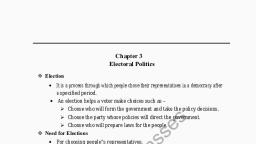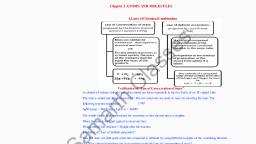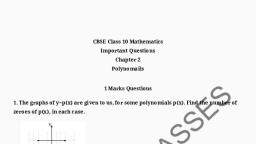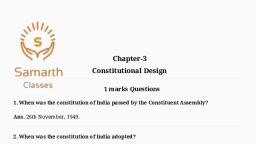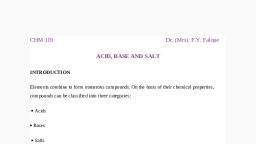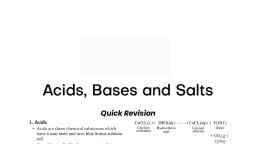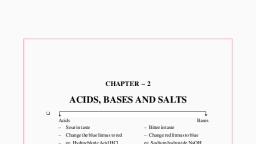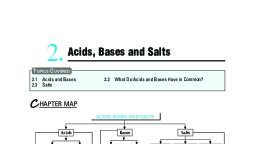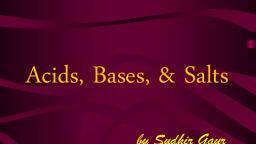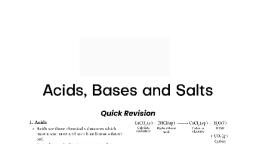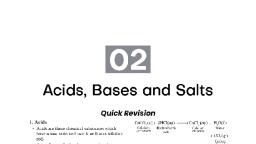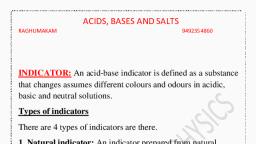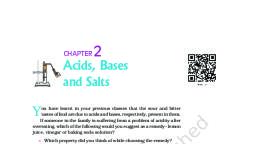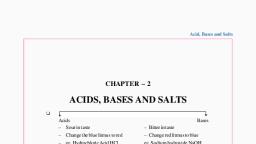Page 1 :
Acids, Bases and Salts, Quick Revision, 1. Acids, CACO, (s)+ 2HCI(aq), → CaCl, (aq) + H,0(1), Calcium, carbonate, Hydrochloric, acid, Acids are those chemical substances which, Calcium, chloride, Water, have a sour taste and turn blue litmus solution, red., + CO,(g ), Carbon, dioxide, According to Arrhenius concept, substances, that furnish H* ions in an aqueous solution are, called acids., → NaCl (aq), + H,O(s) + CO, (g), H,SO, → 2H* + So;, • Acids may be strong (which completely, e.g., Substances that furnish hydroxide ions (OH), in aqueous solution are called bases. e.g., Caustic soda or sodium hydroxide, NaOH., 2. Chemical Properties of Acids, • Reaction with Metals Dilute acids, and H,SO,, not HNO,) react with certain active, metals like zinc (Zn), iron (Fe), etc., to evolve H,, Strong Bases The substances/bases which, ionise completely to furnish OH ions, are called strong bases. e.g. KOH (caustic, potash)., • Weak Bases The bases which ionise only, partially are called weak bases. e.g. Calcium, hydroxide [Ca(OH),]., • Alkali Water soluble base is called alkali. e.g., NaOH. All alkalies are base, but all base are, not alkalies., Samasth Claase, HCI, 45, gas., e.g., Zn(s ) + H,SO, (aq) –, → ZnSO,(aq)+ H,(g), 4, Zinc, Zine, Hydrogen, Sulphuric, acid, sulphate, • Reaction with Metal Oxides Acids react with, certain metal oxides (basic oxides) to form salt, and water., • Bases have bitter taste, turn red litmus to blue, and soapy to touch., e.g., 4. Chemical Properties of Bases, • Reaction with Metals Strong bases react, with active metals to produce hydrogen gas. e.g., CaO(s)+ 2HCI(aq), → CaCl, (aq)+ H,O(1), Calcium, oxide, Water, Hydrochloric, аcid, Calcium, chloride, • Reaction with Metal Carbonate and, Hydrogen Carbonate Acids react with metal, carbonates and hydrogen carbonates to produce, carbon dioxide gas. e.g., Zn(s)+ 2NAOH(aq), Sodium hydroxide, → Na ,ZnO, (aq), Zinc, Sodium zincate, + H,(g), Hydrogen
Page 2 :
Acids, Bases and Salts, 17, Reaction with Non-metallic Oxide Bases, Colour, react with non-metallic oxides (acidic oxides) to, produce salt and water. This reaction proves, that non-metallic oxides are acidic in nature. e.g., Indicator, pH-range (In Acidic (In Basic, Medium) Medium), (i) Natural Indicators, CO, (g )+ Ca(OH),(aq), → CaCO, (s )+ H,0(1), Litmus, Red, Blue, Calcium, carbonate, Water, Carbon, dioxide, Slaked lime, Turmeric, Yellow, Red, 5. Reaction Between Acids and Bases, Red cabbage, Red, Green, • Acids react with bases to produce salt and water., In this reaction, acid neutralises a base,, i.e. reduce its effect or vice-versa, thus the, juice (from, leaves), reaction is known as neutralisation reaction., (ii) Synthetic indicators, • In general, neutralisation reaction can be, Phenolphthalein 8.4-10.00 Colourless Pink (Red), written as, Base + Acid → Salt +Water, Methyl orange, 3.1-4.4 Red, Yellow, (iii) Olfactory Indicators Those substances, whose odour changes in acidic or basic, medium are called olfactory indicators. e.g., e.g., → NaCl(aq)+ H,O(1), NaOH(aq)+ HCI(aq), Hydrochloric, acid, Sodium, Water, Sodium, chloride, hydroxide, extract and onion., 6. Effect of Dilution on an Acid or Base, Mixing of an acid or base with water is called, dilution. It results in decrease in the, given acid or base is, a universal indicator is, used which is a mixture of several indicators., concentration of ions (H,O"/OH) per unit, volume and the acid or base is said to be, It shows different colours at different, concentrations of hydrogen ion in a solution., diluted., • The process of diluting an acid or base is a, highly exothermic process. The acid must be, added slowly to water with constant stirring., • If water is added to a concentrated acid, the heat, generated may cause the mixture to splash out, 8. Strength of an Acid or Base, Strength of an acid or base depends on the, number of H* ions or OH¯ ions produced by, them respectively., Larger the number of H* ions produced by, an acid, stronger is the acid. Similarly, larger, the number of the OH ions produced by a, base, stronger is the base., Samarth Claes, and cause burns., 7. Indicators, Indicators are the substances that change their, colour or odour when added into an acid or, alkaline solution. Indicators can be classified as, 9. pH Scale, It is a scale used for measuring hydrogen ion, concentration. The p in the pH stands for, potenz which means power in German. It, has values ranging from 0 (very acidic) to 14, (very alkaline)., Thus, pH is a number which indicates the, acidic or basic nature of a solution., natural, synthetic indicators, olfactory indicators, and universal indicators., (i) Natural Indicators These indicators are found in, nature in the plants. e.g. Litmus solution is a, purple colour dye extracted from the lichen plant., (ii) Synthetic Indicators The indicators which are, synthesised in the laboratory or industry are, known as synthetic indicators. e.g. Methyl, orange, phenolphthalein., • According to Danish chemist Sorensen, pH is, the negative of logarithm to the base 10 of, hydrogen ion concentration present per litre, of solution.
Page 3 :
18, CBSE New Pattern, Science X (Term-I), (iii) pH in Our Digestive System During, indigestion the stomach produces too, much acid, it causes pain and irritation., To correct the disturbed pH range, milk, of magnesia (a mild base) is used as a, medicine, which is also called antacid., • In other words, value of pH is equal to the, logarithm to the base 10, inverse of hydrogen ion, concentration., pH=- log 10 [H* ], 1, → [H*]= 10¯ H, [H*], log 10, %3D, (iv) pH Change Leads to Tooth Decay If, the pH inside the mouth decreases below, 5.5 (acidic), the decay of tooth enamel, begins. The bacteria present in the mouth, degrades the sugar and left over food, particles and produce acids that remains, in the mouth after eating., 1, Similarly, pOH=- log [OH¯]=log, %D, [OH"], and pH + pOH —DрК., 14, Higher the hydronium ion concentration present in, the solution, lower is its pH value [pH means power, of hydrogen ions]., - If pH >7, solution is basic., - If pH < 7, solution is acidic., - If pH = 7, solution is neutral., To prevent tooth decay, toothpastes, (basic) are used which neutralise the, |, excess acid., (v) Self Defence by Animals and Plants, through Chemical Warfare When, insects like honeybee, ant, etc., bite, they, inject an acid into the skin, that causes, pain and irritation. If a mild base like, baking soda is applied on the affected, area, it gives relief., (vi) pH in Plants Stinging hair of nettle, leaves injects methanoic acid in the skin, which causes burning pain. It is cured by, rubbing with leaves of dock plant., 11. Salts, • These are produced by the, %3D, |, Neutral, Acidic nature increasing, Basic nature increasing, 7, 14, H*, OH, Increase in H ' ion concentration, Decrease in H' ion concentration, Variation of pH wilth the change in, concentration of H (ag) and OH (ag) ions, of free, ions. A paper impregnated with the universal, indicator is used for measuring pH., 1, 2, 4, 7, 8 9 10 11 12 13 14, neutralisation reaction between acid, ↑, Milk of, Gastric Lemon juice, juice (about 2.2), (about 1.2), and base., Pure water,, blood, Sodium, magnesia, (10), hydroxide, solution, → Salt + Water, Acid+ Base, (7.4), (about 14), pH of some common substances shown on a pH paper, HX + MOH-, МX + HОН, Salt, 10. Importance of pH in Everyday Life, Following are the examples showing importance of pH, in everyday life, (i) Plants and Animals are pH Sensitive Our body, works normally within a pH range of 7.0 to 7.8., When pH of rain water goes below 5.6, it is called, acid rain. It lowers the pH of the river water and, makes survival of aquatic life difficult., (ii) pH of the Soil Nature of soil is known by testing its, pH and then a particular crop is grown in it by, selecting fertilizer., Here, X is non-metal and M is metal., • Salts of strong acid and strong base are, neutral (pH=7). Salts of strong acid and, weak base are acidic [pH < 7] and salts of, strong base and weak acid are basic in, nature (pH > 7)., 12. Common Salt : Sodium Chloride, Common salt is formed by the, combination of hydrochloric acid and, sodium hydroxide solution. It is the salt, that we use in food., marth Ciasses
Page 4 :
Acids, Bases and Salts, 19, (i) Caustic Soda (Sodium Hydroxide [NaOH]), When electricity is passed through an, aqueous solution of sodium chloride, (called brine), it decomposes to form sodium, hydroxide., The process is called the chlor-alkali, Manufacture of baking soda is shown in, reaction below, NaCl+ H,O+ CO, + NH,, Carbon, dioxide, Brine, Ammonia, NH,CI + NAHCO,, Ammonium, chloride, Sodium, hydrogen, carbonate, (iv) Washing Soda (Sodium Carbonate, Na,CO, 10H,O]) Sodium carbonate can be, obtained by heating baking soda;, recrystallisation of anhyd. sodium carbonate, gives washing soda. It is also a basic salt., Na,CO,(s) + 10H,O(1), (v) Plaster of Paris (Calcium Sulphate, Hemihydrate [CaSO, 1/2 H,O]) It is obtained, by heating gypsum (CaSO, - 2H,0) at 373 K. At, this temperature, gypsum loses water molecules, and forms plaster of Paris., process., → 2NAOH(aq), Sodium hydroxide, 2NaCl(aq) + 2H,O, 3, Sodium chloride, Water, + Cl, (g )+ H,(g), Chlorine Hydrogen, Na,CO, 10H,0(s), (ii) Bleaching Powder (Calcium Oxychloride, [CAOCI,]) It is produced by the action of, chlorine on dry slaked lime., Cа(ОН), +, Slaked lime, Cl,, Chlorine, CaOCI,, Bleaching powder Water, + H,O, (iii) Baking Soda (Sodium Hydrogen Carbonate, or Sodium Bicarbonate [NaHCO]), 373 K, 2H,0, → CASO,, H,O+1HO, 4, Нeat, 2, Plaster of Paris, The soda commonly used in the kitchen, for making tasty crispy pakoras is baking, soda., Water of Crystallisation, It is the fixed number of water molecules present, in one formula unit of a salt. e.g. Hydrated, copper sulphate, CUSO, · 5H,O contains five, molecules of crystallisation., It is produced by using sodium chloride, one of the raw materials., 4, Samarth Casse., Objective Questions, Multiple Choice Questions, 03. Which of the following acids is present, in sour milk?, (NCERT Exemplar), 01. Which of the following is the mineral, acid?, (a) Glycolic acid, (c) Lactic acid, (b) Oxalic acid, (d) Citric acid, (a) Hydrochloric acid, (b) Citric acid, 04. Which of the following is acidic in, (c)Acetic acid, nature?, (d) Lactic acid, (a)Lime juice, (c) Lime water, (b) Human blood, (d) Antacid, 02. Which of the following statements is, incorrect about acids?, 05. Select the acid which contains four, (a)Acids conduct electricity, (b)Acids do not corrode metals, (c)Acids gives hydrogen ions afterdissociation, (d) All of the above are correct, hydrogen atoms in it., (b) Sulphuric acid, (d) Acetic acid, (a) Formic acid, (c) Nitric acid
Page 5 :
20, CBSE New Pattern, Science X (Term-I), 06. Match the acids given in Column I with, their correct source given in Column II, and select the correct answer using the, 10. Which of the following gives OH¯ ions, on dissociation in water?, (a) Calcium carbonate (b)Iron sulphide, (c) Calcium oxide, options given below:, (d) All of these, Column I, 11. Which of the following hydroxides is, Column II, A. Lactic acid, 1. Tomato, not an alkali?, (a)Ammonium hydroxide, (b) Calcium hydroxide, (c) Copper hydroxide, (d)Sodium hydroxide, B. Citric acid, 2. Curd, C. Acetic acid, 3. Oranges, D. Oxalic acid, 4. Vinegar, 12. Sodium hydroxide and potassium, hydroxide are used as electrolytes., Codes, A B, C, (a) True, (c) Can't say, (a) 1, 3, 4, (b) False, (b) 3, (d) Partially true/false, 1, 4, 2, 13. Which of the following statements is, incorrect about bases?, (c) 4, 2, 1, 3, (d) 2, 4, 1, Bases are bitter in taste, amath Classa, (c)Ca(OH), + NaCI, 07. Which of the following statements is, )They are soapy to touch, (c) They are corrosive in nature, (d)All bases are alkali, not correct?, (NCERT Exemplar), (a) All metal carbonates react with acid to give, a salt, water and carbon dioxide, 14. Which of the following combination, justify that lime water is basic in nature?, (b)Ca(0H), + Na0H, (b) All metal oxides react with water to give, and acid, (c) Some metals react with acids to, and hydrogen, (d) Some non-metal oxides react with water to, form an acid, (a)Ca(OH), + CO,(g), (d) Both (b)and (c), 15. Identify 'X' and 'Y' in the fol,lowing, reaction:, 08. Which gas is evolved, when, hydrochloric acid is added in first test, tube containing small pieces of marble, and then in second test tube containing, zinc granules?, Ca(OH), (ag)+ X(g), → CaCl, (s) +Y, + 2NH, (g)↑, (a)X=NH,CI, Y=O,, (b)X=NH,CI, Y=H,O, (c)X= (NH,),SO4, Y =SO2, (d)X=NH,OH, Y=O2, (a) H, is first test tube, O, in second test tube, (b) CO, in first test tube, H, in second test tube, (c) O, in first test tube, Cl, in second test tube, %3D, %3D, 2, 2, 16. An acid when dissolved in water gives, ions., (d) Cl, in first test tube, CO, in second test, .... .., (a)hydroxide, (c) hydronium, 17. What happens, when sodium hydroxide, is mixed in water?, (b) negative, (d) All of these, tube, 09. When dilute sulphuric acid reacts with, iron sulphide, the gas evolved is .., .... ....., (a)hydrogen sulphide, (b) sulphur dioxide, (c) sulphur trioxide, (d) vapour of sulphuric acid, I. Hydronium ions will be produced., II. Heat is released during dissolution., III. The process is endothermic.


